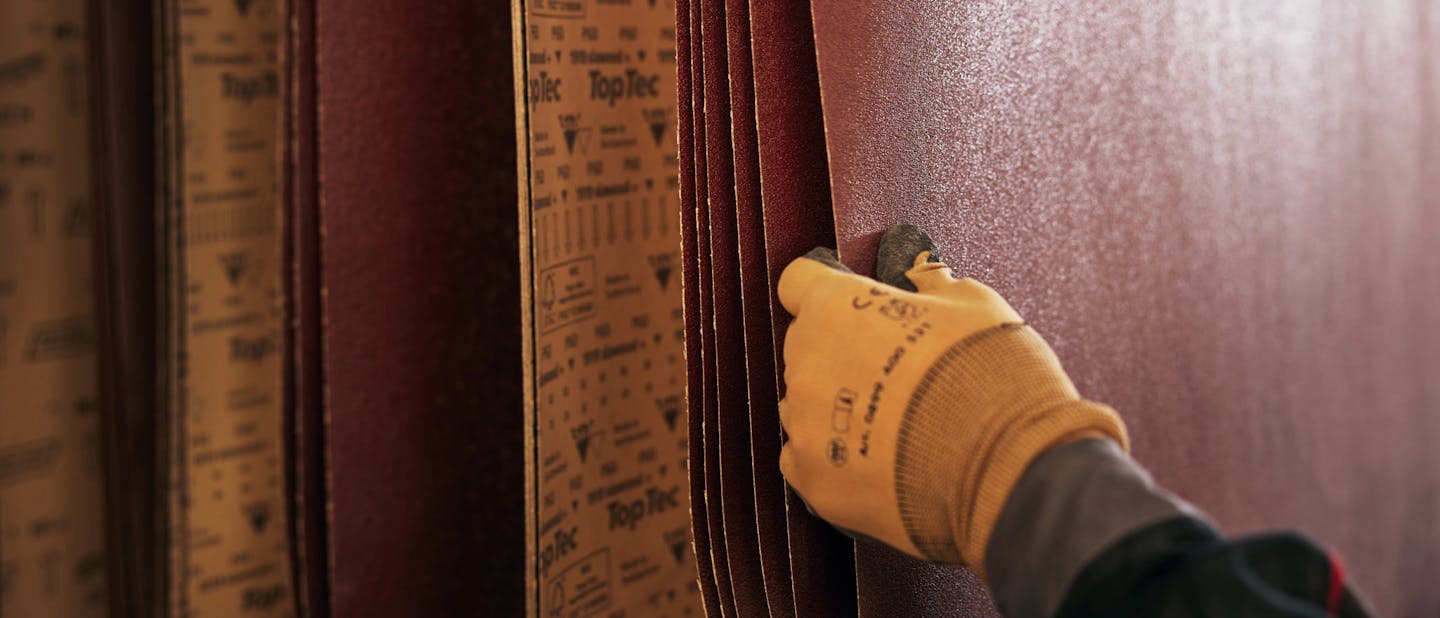
The impact of abrasive grain size on grinding performance
Abrasive belt grinding is a common process used in industries that require precision material removal and surface finishing. Whether it's used for shaping complex parts, smoothing rough edges, or creating a polished surface, abrasive belt grinding is essential in manufacturing and finishing operations. One of the key factors that can greatly affect the success of this process is the size of the abrasive grains on the belt. In fact, the choice of grain size can make a big difference in terms of both efficiency and the quality of the finished product.
Why abrasive grain size matters
The abrasive grain size refers to the individual particles that make up the grinding surface of the belt. These particles come in a variety of sizes (grits), from larger grains that are more aggressive and remove material quickly to smaller grains that allow for a smoother, more controlled finish. Choosing the right grain size depends on the specific goals of the grinding operation.
Larger abrasive grains are often used in situations where a significant amount of material needs to be removed in a short amount of time. For example, when rough shaping a piece of metal or removing imperfections from a surface, larger grains can cut through the material quickly and efficiently. These grains create deeper grooves in the surface of the material, which can be desirable in certain stages of production but may not be suitable for a final finish.
On the other hand, smaller abrasive grains are ideal for fine finishing work. Because they remove material more slowly and create less aggressive cuts, they are perfect for producing a smooth, polished surface. If the goal is to achieve a high-quality finish with minimal surface roughness, smaller grains are the go-to choice. These finer grains allow for more precision and leave a surface that is smoother and more refined.
The balance between efficiency and surface quality
In most grinding processes, there is a trade-off between the speed of material removal and the quality of the surface finish. Larger grains offer higher efficiency but can leave behind a rougher surface, while smaller grains provide a better finish but at a slower removal rate. Finding the right balance between these two factors is crucial for optimizing the grinding process.
For example, when working on a large workpiece that requires significant material removal, starting with a belt that has larger abrasive grains can speed up the process. Once the bulk of the material has been removed, switching to a belt with smaller grains can refine the surface and provide a smooth finish. This approach allows for efficient grinding without sacrificing the quality of the final product.
In some cases, however, using only smaller grains from the start might be necessary, especially when working on delicate parts or when precision is a top priority. The ability to control the grinding depth and removal rate with smaller grains allows for more careful and controlled work, which can be critical in industries where surface quality and detail are paramount.
How grain size affects the surface finish
The grain size doesn’t just affect the speed of material removal—it also impacts the appearance and texture of the surface being worked on. Larger grains tend to create deeper scratches and leave behind a more uneven surface, which is why they are often reserved for rough grinding or shaping. These scratches can later be polished out by using belts with smaller grains during subsequent stages of the process.
In contrast, smaller grains produce much finer scratches that are less noticeable to the naked eye. These tiny scratches result in a smoother surface that feels polished and professional. When surface quality is critical, such as in the pharmaceutical industry, using fine grains for finishing ensures that the workpiece meets the high standards required.
Noise, vibration, and heat considerations
Aside from the immediate effects on material removal and surface quality, abrasive grain size also influences other aspects of the grinding process, such as noise, vibration, and heat generation. Larger grains tend to create more vibration and noise due to their aggressive cutting action, which can be a concern in environments where minimizing disruption is important.
Additionally, larger grains often generate more heat during the grinding process. This excess heat can lead to unwanted thermal effects, such as material warping or surface burns, especially in heat-sensitive materials. Smaller grains, because of their finer and less aggressive action, generate less heat, making them a better choice for processes that require precise temperature control or for materials that are prone to heat damage.
Making the right choice for your application
Ultimately, the choice of abrasive grain size comes down to the specific needs of the grinding operation. If speed and efficiency are the main goals, larger grains are often the best choice for the initial stages of grinding. But if surface quality is paramount, smaller grains will be necessary to achieve a smooth, polished finish.
Manufacturers and operators must carefully consider the material being worked on, the stage of the process, and the desired outcome when selecting the right abrasive belt. Whether it’s large-scale material removal or delicate surface finishing, choosing the appropriate grain size is key to achieving the best results.
In conclusion, abrasive grain size has a significant impact on both the efficiency of material removal and the final surface quality. By understanding how different grain sizes affect the grinding process, operators can make informed decisions that improve both the speed and precision of their work. Whether it’s rough shaping or fine finishing, the right abrasive grain size makes all the difference.